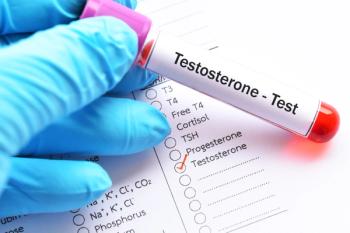
Risk of PH Increases With Preterm Birth
Infants born between the 23rd and 25th weeks of pregnancy, classified as extremely low gestational age newborns, are surviving in increasing numbers, note study authors, and with that is growing clinical interest in their long-term sequelae, including pulmonary hypertension (PH).
Health vulnerability is especially common in extremely low gestational age newborns (ELGANs), one outcome of which is a higher risk of developing
The authors conducted a prospective observational cohort study to investigate the incidence and severity of BPD-PH among infants born between the 23rd and 25th weeks of pregnancy, because “the pathogenesis of developmental lung disorders in BPD-PH is multifactorial (vascular, parenchymal, interstitial alterations) and incompletely understood,” they wrote. “Study data specifically addressing BPD-PH in extremely premature infants (eg, <26 weeks of gestation) are very sparse.”
Biventricular pressure, size, and function and serum N-terminal pro-B-type natriuretic peptide (NT-proBNP) levels at 3 and 12 months of age were determined; NT-proBNP levels were the secondary outcome. Their 3 categories of BPD severity were mild (room air at 36 weeks postmenstrual age [PMA]), moderate (oxygen needed <30% of the time at 36 weeks’ PMA), and severe (oxygen needed ≥30% of the time or positive pressure ventilation required), and PH severity was stratified using a ratio of right ventricular systolic pressure (RVSP) to systemic arterial pressure: mild (<50%), moderate (50%-75%), and severe (>75%).
Forty-seven consecutively born ELGANs admitted to the neonatal intensive care unit of the authors’ hospital comprised the study cohort, and 34 still alive at 3 months postnatal age were included in the final analysis. Overall, 13 died within 3 months of their birth, with the median (IQR) lifespan being 6 (1-33) days, more than half of whom died within 24 hours.
By age 3 months, evidence of PH was seen in 54% of the 34 patients, and 17.6% of this group still had signs of PH at age 12 months. BPD developed in 31 of the patients, with most (n = 16) having a mild case. Among those with moderate (n = 10) or severe BPD (n = 5), every infant had received a PH diagnosis by age 3 months. None of the patients with mild BPD or who did not have BPD (n = 3) developed PH.
When considering both conditions, signs of PH and moderate to severe BPD were evident in 44% of the overall cohort by age 3 months and 17.6% of this group still had signs of BPD-PH at age 1 year. When an echocardiography was performed at 12 months, there was no evidence of BPD-PH in 19 patients, the condition had resolved in 9, and 6 patients had chronic BPD-PH.
Rates of Apgar scores of at least 5 and 10, arterial cord blood pH, gestational age at birth, and maternal age were equivalent among the groups. There were more than twice as many days requiring supplemental oxygen seen in the BPD-PH group (n = 15) vs the cohort with BPD without PH (n = 19): 103 (68-134) vs 50 (36-58). In addition, days requiring invasive mechanical ventilation were 4 times greater in the BPD-PH group vs the BPD without PH group: 29 (19-46) vs 7 (1-12).
RVSP values were higher in the BPD-PH group vs among the patients who did not have PH, at the 3- and 12-month evaluations. At 3 months, these measures were 34 vs 21 mm Hg, respectively, and at 12 months, 24 vs 19.5 mm Hg (both P < .001). Lower longitudinal systolic RV function was also seen among those with BPD-PH at 3 months: 6.6 vs 9.0 mm Hg. Further, lower pulmonary artery acceleration time was evident in the BPD-PH group at both 3 and 12 months of age: 45 vs 60 ms and 75 vs 85 ms, respectively.
Median NT-proBNP levels, too, were consistently higher at both timepoints:
- 3 months:
- BPD-PH: 1255 (621-2135) pg/mL
- BPD without PH: 466 (372-663) pg/mL
- 12 months:
- BPD-PH: 359 (356-720) pg/mL
- BPD without PH: 87 (66-125) pg/mL
The authors noted that NT-proBNP levels, especially, help to differentiate infants with and without BPD-PH, but they add that their findings still call for additional study. They also highlight that their 12-month finding of 17.6% of patients still having evidence of BPD-PH requiring PH-targeted pharmacotherapy calls for further study of the safety and efficacy of PH-targeted therapy in preterm infants.
Reference
Sallmon H, Koestenberger M, Avian A, et al. Extremely premature infants born at 23–25 weeks gestation are at substantial risk for pulmonary hypertension. J Perinatol. 2022;42(6):781-787. doi:10.1038/s41372-022-01374-w
Newsletter
Stay ahead of policy, cost, and value—subscribe to AJMC for expert insights at the intersection of clinical care and health economics.















































